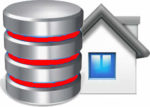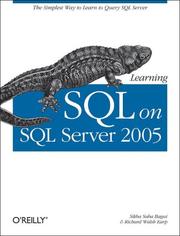The Easiest Way to Learn to Query SQL Server
In the vast wonderland of geek-appeal t-shirts, you may see one
that reads:
> SELECT * FROM users WHERE clue > 0
O Rows Returned
If you don’t get the joke, then you’re one of the few programmers today not
familiar with SQL or Structured Query Language. You don’t have to go far today
to find a SQL database, just look at the nearest web application, job tracking
system for a support team, or accounting package. SQL has become the standard
language for generating, manipulating, and retrieving database information.
If you’re new to the subject or need a SQL refresher then “Learning SQL on SQL
Server 2005” (O’Reilly) by Sikha Saha Bagui and Richard Walsh Earp is the smart
choice. The book is a systematic guide to learning SQL using Microsoft’s SQL
Server 2005–a popular relational and multi-user database.
According to the authors, Bagui and Earp, SQL Server is one of the most powerful
database engines used today: “Microsoft’s latest release, SQL Server 2005, is a
comprehensive database platform that provides secure and reliable storage for
both relational and structured data, enabling one to build and manage
high-performance data applications,” they explain. “SQL Server 2005’s close
integration with Microsoft Visual Studio, the Microsoft Office System, and a
suite of new development tools set SQL Server 2005 apart from previous versions
and from other database engines. This system allows developers to build, debug,
and operate applications faster then ever before.”
Based on a popular university-level course designed by authors, “Learning SQL on
SQL Server 2005” starts with very simple SQL concepts, and slowly builds into
more complex query development. Every topic, concept, and idea comes with
examples of code and output, along with exercises to help readers gain
proficiency in SQL and SQL Server 2005.
“This book is the culmination of homework lessons to accompany a first course in
databases,” says Earp. “We wrote the book to be done as homework on a self-study
basis: the students were to read the text and then do the questions on a SQL
engine. We wanted students to have a marketable skill when they graduated.” Earp
adds that the authors believe that many of their students got their initial jobs
because they were fluent in SQL.
“Too many students graduate from college without a marketable skill,” Earp
continues. “Most employers want to hire people who can exhibit some real-world
skill from the fist day of work. Our book provides such a skill and the
accompanying theoretical basis.” The book is intended to be used by schools and
SQL training organizations as well as by database and IT professionals who are
actively working with SQL Server 2005.
With this book, students will learn:
-Beginning SQL commands, such as how and where to type an SQL query, and how to
create, populate, alter, and delete tables.
-How to customize SQL Server 2005’s settings and about SQL Server 2005’s
functions
– About joins, a common database mechanism for combining tables
– Query development, the use of views and other derived structures, and simple
set operations
– Subqueries, aggregate functions and correlated subqueries, as well as indexes
and constraints that can be added to tables in SQL Server 2005.
Whether you’re a self-learner who has access to the new Microsoft database,
working on SQL Server with access at your company, or a computer science student
or MIS student, “Learning SQL on SQL Server 2005” will get you up to speed on
SQL in no time.

